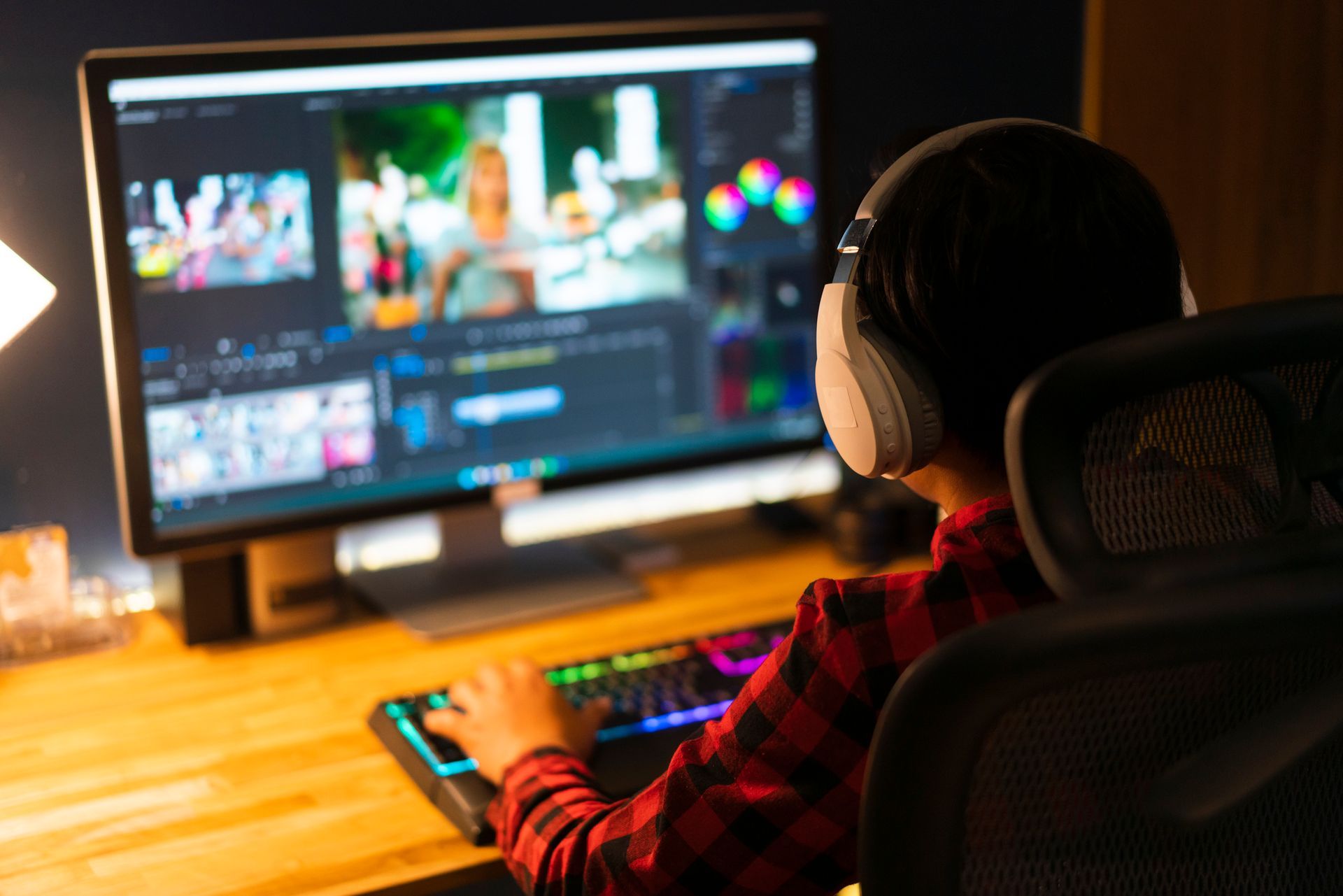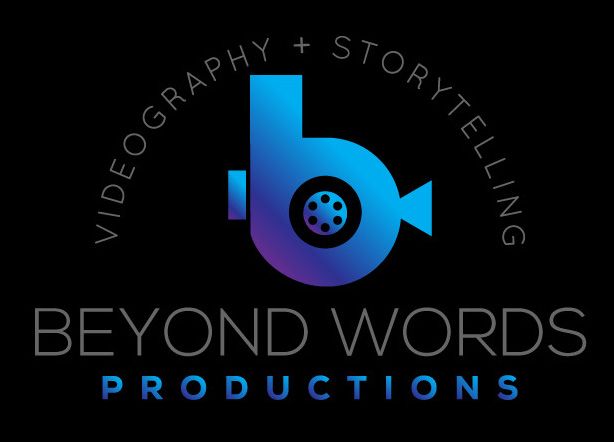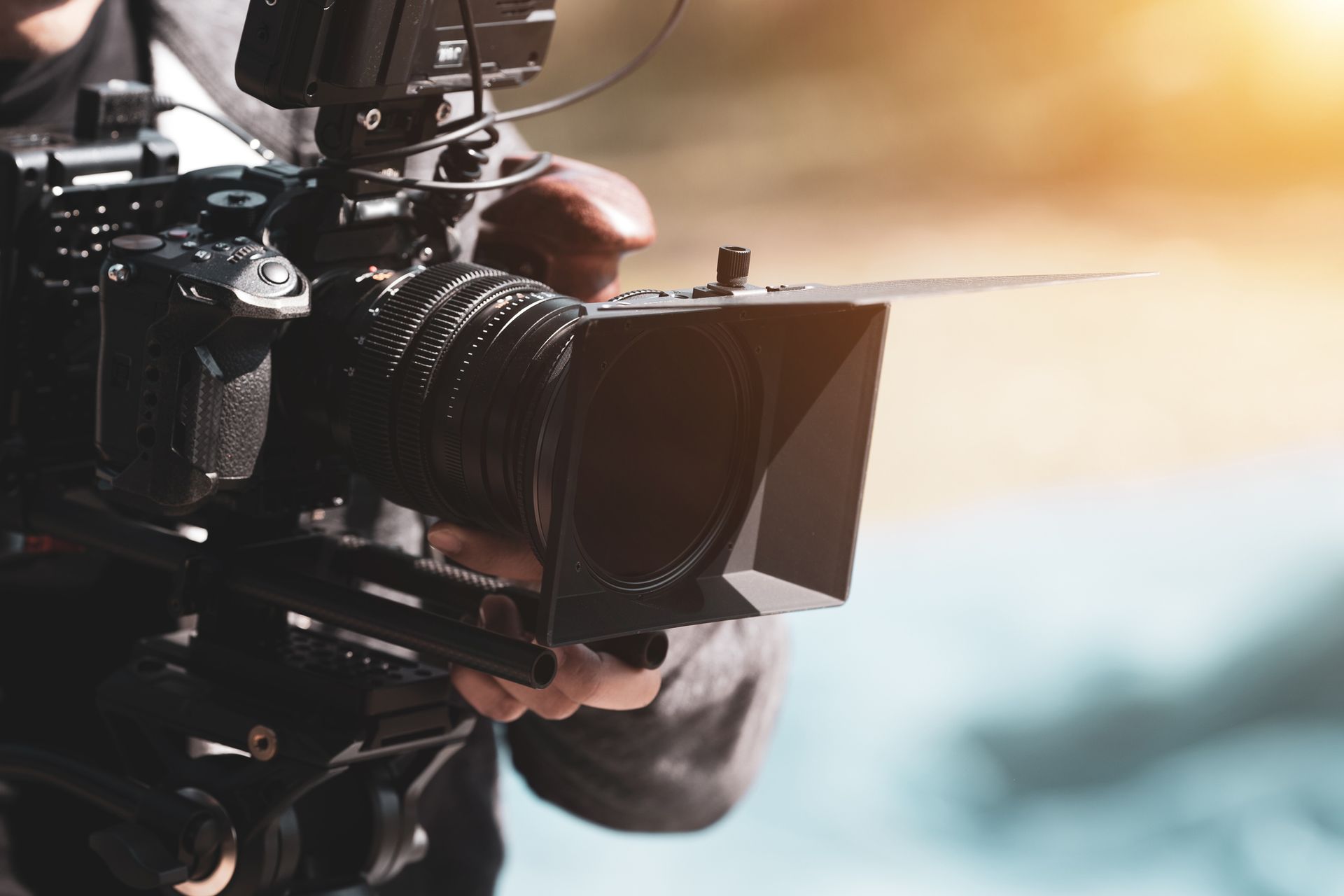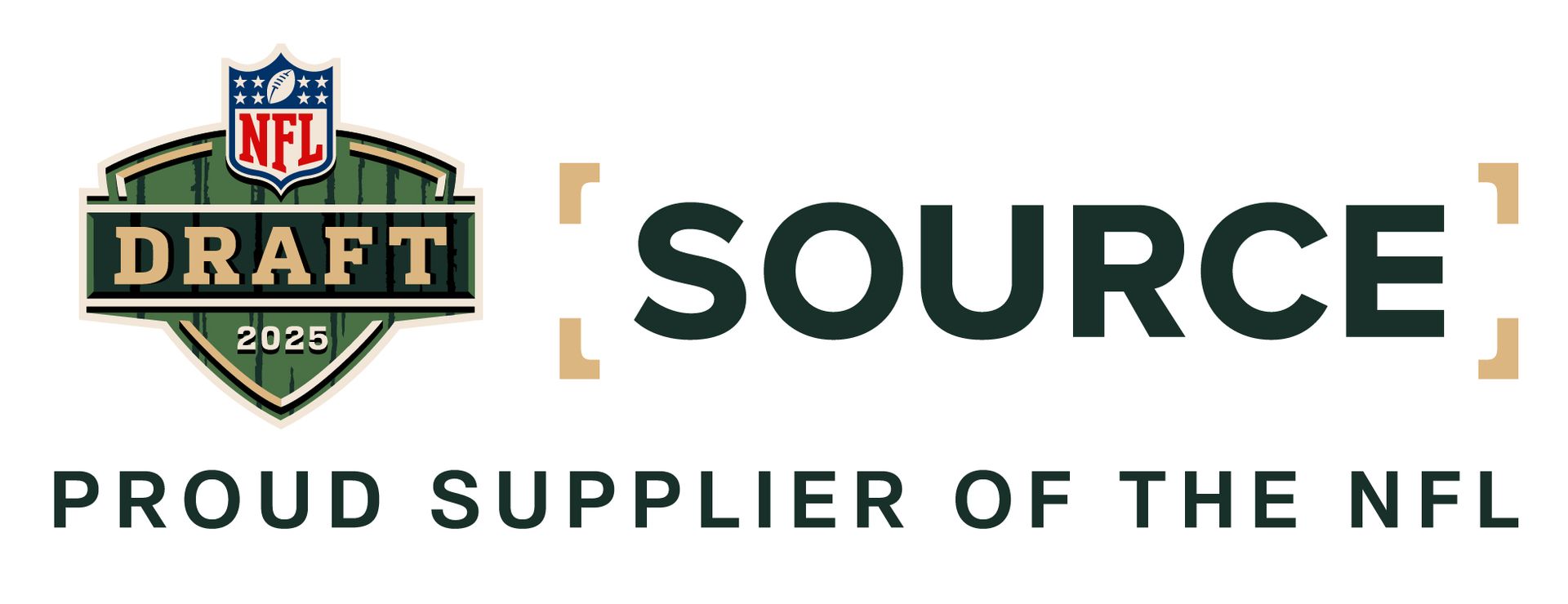The Rule of Thirds: A Guide to Balanced Composition
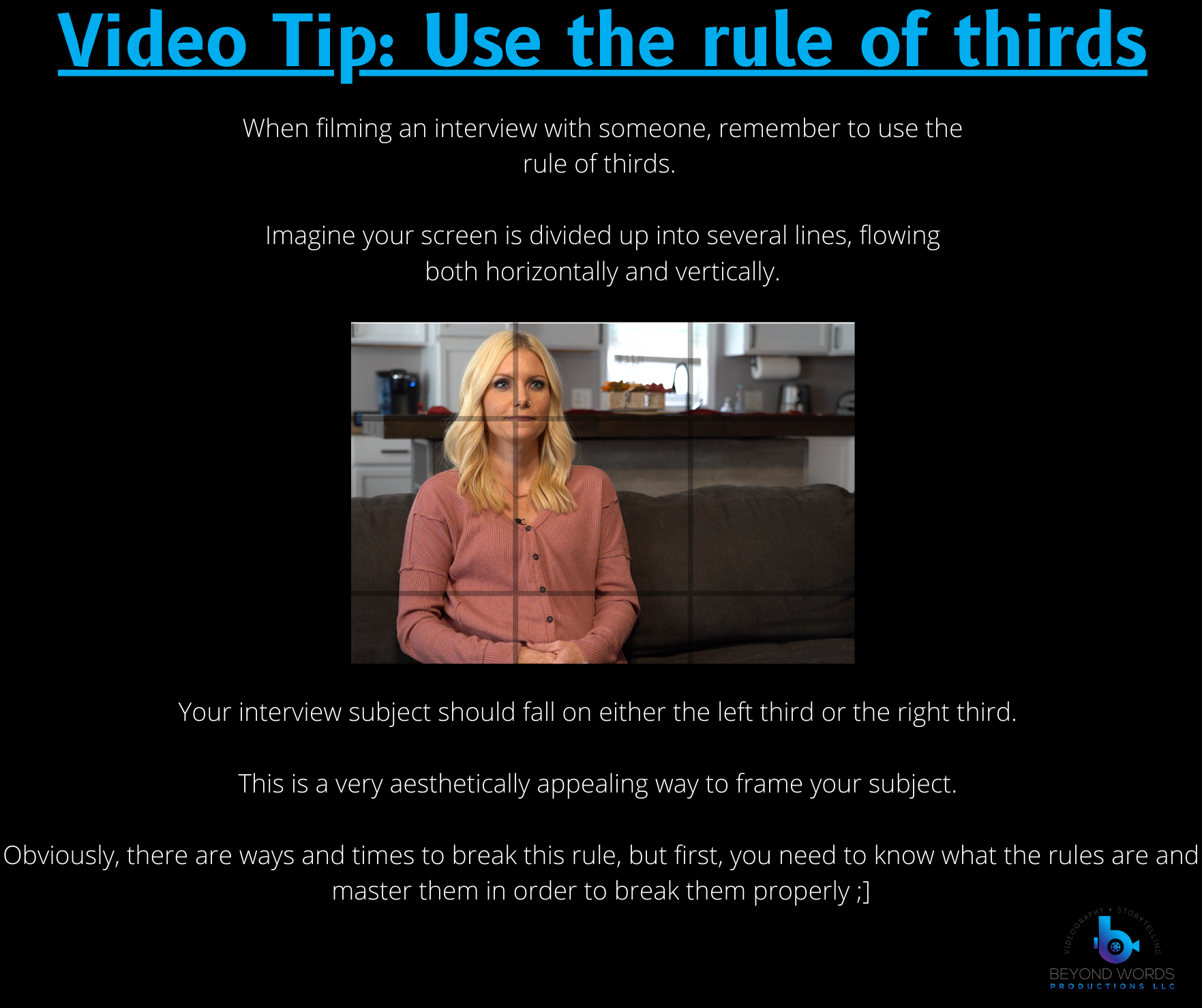
An example of the rule of thirds being used to compost this interview shot ⬆️
Videography/photography is about more than just capturing a moment; it’s also about creating visually appealing images where every frame is intentional. One fundamental rule to follow is “The Rule of Thirds.”
What is the Rule of Thirds?
The Rule of Thirds is a simple and effective guideline for achieving balanced and visually engaging compositions in photography/videography. It divides an image into nine equal parts by creating two equally spaced horizontal lines and two equally spaced vertical lines, resulting in a grid of nine squares. (See image above ^)
How Does It Work?
The idea behind the Rule of Thirds is to place key elements of interest along or near the gridlines or at their intersections. Instead of centering your subject, you position it off-center to create a more dynamic and visually pleasing composition.
To break that down:
- Gridlines: Mentally divide your image into thirds both horizontally and vertically. This creates four intersection points where the gridlines intersect.
- Placement: Position important elements, such as your subject or a prominent object, along one or more of these lines or at the intersection points. This draws the viewer's eye to these areas and creates a sense of balance and harmony in the composition.
Why Use the Rule of Thirds?
- Balance and Harmony: Placing elements off-center creates a more balanced and harmonious composition. It prevents your subject from getting lost in the middle of the frame and adds visual interest.
- Leading Lines: The gridlines themselves can serve as leading lines that guide the viewer's eye through the image. This helps create a natural flow and storytelling within your photos.
- Negative Space: The Rule of Thirds allows you to incorporate negative space effectively. Negative space can be used to emphasize the subject, convey a sense of openness, or add depth to your photos.
- Visual Impact: By following this guideline, you can create frames that immediately capture the viewer's attention and leave a lasting impression.
When to Break the Rule:
While the Rule of Thirds is a valuable guideline, it's essential to remember that visual art is also about creativity and breaking rules when necessary. Sometimes, centering your subject can work exceptionally well for specific compositions. The key is knowing when to apply the Rule of Thirds and when to deviate from it to achieve the desired effect. You have to master the rules before you know how to break them.
